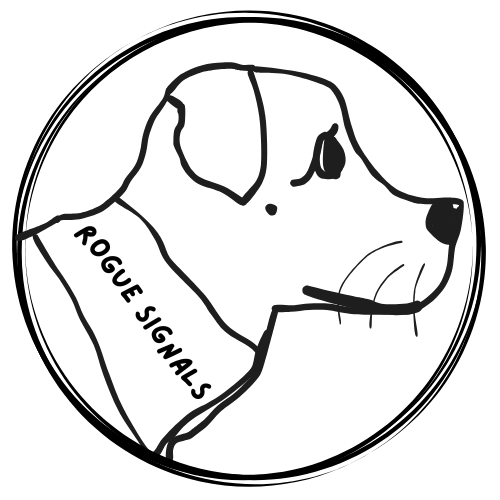Gold’s Mysterious Rally in 2024: A Warning of Fiscal Ruin and Global Tensions in 2025

TL;DR:
Gold prices have soared to unprecedented highs in 2024, signaling potential fiscal turmoil and escalating geopolitical conflicts. This surge may indicate that nations like China and Russia are quietly building reserves, preparing for financial instability or even conflict with the West. As traditional economic drivers lose relevance, the current gold rally could be a harbinger of a global financial reset in 2025.
The 2024 Gold Rally: Unprecedented Market Dynamics
Gold has been a traditional safe haven during economic uncertainty, but the surge seen in 2024 has defied even the most seasoned market analysts. Trading above $2,700 per ounce, gold's rise contradicts the usual market logic that sees it inversely correlated with the U.S. dollar and bond yields. Instead, gold has been climbing alongside a strong dollar and rising bond yields, hinting that the usual economic fundamentals are no longer dictating market behavior.
The last seven months have seen gold prices increase sharply without the typical profit-taking by speculators. Ross Norman, a veteran in the bullion market, notes that this rally is both relentless and opaque, with the usual players like ETFs and central banks accounting for only half of the gold demand. “There’s something very mysterious about this market move,” Norman remarked, suggesting that hidden forces might be at play.
Hidden Buyers and Central Bank Strategies
The surge in gold demand has coincided with a marked increase in central bank purchases over the past two years. In 2022 and 2023, global central banks tripled their gold purchases, spurred by concerns over financial sanctions and the freezing of foreign reserves, as seen in the West’s response to Russia’s actions in Ukraine. However, by mid-2024, official central bank purchases had slowed, with only 136 tonnes reported since March.
China’s central bank, for instance, claims to have paused its gold accumulation, yet market analysts suspect that significant purchases are being made discreetly through proxies to avoid detection. This secrecy has fueled speculation that China, Russia, and other adversarial nations may be building war chests in preparation for a major geopolitical confrontation. The lack of transparency, combined with gold’s rally, suggests that these countries are hedging against potential economic sanctions or preparing for financial independence from Western-controlled systems.
Geopolitical Shifts: The Weaponization of Gold
The financial sanctions imposed on Russia in 2022, including the freezing of $300 billion in reserves and its expulsion from the SWIFT payments system, sent shockwaves through the global financial system. These moves exposed the vulnerability of countries heavily reliant on U.S.-dominated financial channels. As a result, nations like China, Russia, and even Brazil are increasingly turning to physical gold as a way to bypass potential sanctions and insulate their economies from Western pressures.
Gold’s enduring value, free from the manipulations of central banks and fiat currency policies, makes it a preferred reserve asset in times of geopolitical uncertainty. The push for de-dollarization among BRICS nations further underscores the desire to break free from U.S. financial hegemony. Russia’s recent push for a BRICS-backed reserve currency, albeit unsuccessful, indicates a long-term strategy to undermine the dollar’s dominance.
Fiscal Instability: A Looming Crisis for Western Economies
While the East stockpiles gold, Western economies face their own set of challenges. The International Monetary Fund (IMF) has projected that global public debt will reach a staggering $100 trillion by the end of 2024. The United States, in particular, is running a budget deficit of 7.6% of GDP, with the debt-to-GDP ratio expected to climb to 132% by 2029. These figures highlight the unsustainable fiscal policies in the West, where governments are increasingly relying on debt to fund social programs, infrastructure, and defense.
The surge in gold prices reflects growing concerns over fiscal mismanagement, particularly in the wake of the COVID-19 pandemic, which led to unprecedented levels of government spending. Investors, wary of the inflationary consequences of such spending, are turning to gold as a hedge. This is a clear indication that trust in fiat currencies, especially the dollar, is eroding.
Financial analysts argue that the U.S. and other Western nations may resort to financial repression—policies that force savers to subsidize debt repayment through negative real interest rates or inflation. Such measures could accelerate the flight to gold as a safe store of value, especially if the Federal Reserve and other central banks continue to struggle with balancing inflation and economic growth.
The Hidden Risks of Surging Gold Demand
As we move into 2025, the implications of gold's extraordinary rally extend beyond mere market speculation. The surge reflects a deeper, systemic mistrust in the global financial architecture, particularly among nations that have historically been vulnerable to Western sanctions. The covert accumulation of gold by state actors like China and Russia suggests that these countries are hedging against the possibility of intensified economic warfare, particularly in the wake of increasing tensions with the West.
China’s Strategic Moves in the Global Gold Market
China, which has been at the center of geopolitical tensions, particularly over Taiwan, is suspected of stockpiling gold through opaque channels to avoid scrutiny. Official reports from the People's Bank of China have shown no new purchases, but experts believe that China is using proxies to quietly amass gold reserves. This accumulation could be part of a larger strategy to insulate its economy against potential sanctions similar to those imposed on Russia.
In a scenario where China decides to escalate its actions around Taiwan—perhaps through a strategic blockade rather than a full-scale invasion—having a substantial gold reserve would provide the economic stability needed to weather sanctions. Moreover, with gold held domestically, China could avoid the risk of its assets being frozen by Western powers, as seen in Russia's experience.
The broader implication is a potential shift in the balance of global economic power. By reducing their dependence on the U.S. dollar and building up gold reserves, countries like China are preparing for a world where financial independence from Western institutions could be a decisive advantage.
The Impact on Global Financial Markets in 2025
The surge in gold prices is already causing ripples across global financial markets, and these effects are likely to intensify in 2025. Traditionally, gold has been a hedge against inflation and a safe haven during periods of economic instability. However, the current rally indicates a more profound shift: a collective move by investors and nations to protect themselves against potential currency devaluation and financial repression.
Implications for the U.S. Dollar and Treasury Markets
The U.S. dollar has long been the world's reserve currency, but its dominance is being challenged as countries diversify into gold and other assets. If this trend continues, it could weaken the dollar's value over time, making it more expensive for the U.S. to finance its growing debt. The U.S. is currently running a budget deficit that exceeds 7.6% of its GDP, and projections indicate that debt levels could surpass 130% of GDP by the end of the decade.
As confidence in the dollar wanes, U.S. Treasury bonds—which have traditionally been seen as a "safe" investment—may lose their appeal. A shift away from Treasuries could force the U.S. to offer higher interest rates to attract buyers, further exacerbating its fiscal challenges. This, in turn, could lead to tighter financial conditions globally, impacting everything from mortgage rates to corporate borrowing costs.
The European Dilemma: Managing Debt Amid Rising Inflation
Europe, too, is facing its own set of challenges. Countries like Italy and France have seen the value of their gold reserves increase substantially, providing a temporary cushion against fiscal pressures. However, with public debt ratios nearing critical levels, European nations may be forced to consider austerity measures or financial repression to stabilize their economies. The rise in gold prices offers a silver lining for countries with substantial reserves, but it also highlights the fragility of the European financial system in a high-debt, high-inflation environment.
The European Central Bank (ECB) is caught in a bind, balancing the need to control inflation with the risk of stifling economic growth. If inflation remains high, the ECB may have to tighten monetary policy further, which could exacerbate debt servicing costs for heavily indebted nations like Italy, Greece, and Spain. The increased demand for gold in Europe reflects not just a hedge against inflation but also a growing fear of economic stagnation.
A Geopolitical Recalibration: The Role of Gold in the New Cold War
The strategic importance of gold is becoming increasingly apparent in what some analysts are calling a new Cold War. The geopolitical landscape is shifting as alliances realign, with countries like China, Russia, and Iran seeking to challenge Western hegemony. The use of gold as a financial buffer is a key part of this strategy, allowing these nations to operate independently of U.S.-controlled financial systems.
Potential Flashpoints: Taiwan and Beyond
One of the most concerning scenarios for 2025 is a potential escalation over Taiwan. Analysts believe that China could impose a "customs blockade" to control semiconductor exports, effectively leveraging its dominance in the global tech supply chain. This would force the West into a difficult position, as any military response would risk further destabilizing the global economy.
Should such a scenario unfold, the accumulation of gold by China could serve as a financial lifeline, allowing it to withstand the economic fallout of Western sanctions. For the West, this could mark a turning point where economic power shifts increasingly toward the East, with profound implications for global markets.
The Path Forward: Strategies for Investors and Policymakers
Given the current trajectory, both investors and policymakers need to consider the implications of a prolonged gold rally and its underlying causes. For investors, diversifying into hard assets like gold may become an increasingly attractive strategy, particularly if fiscal instability and geopolitical tensions continue to rise.
Policymakers, on the other hand, face a more complex challenge. The surge in gold prices reflects a deeper loss of confidence in fiat currencies and central banks. To restore faith in the financial system, Western governments may need to adopt more sustainable fiscal policies and reduce their reliance on debt-financed spending. This could involve painful adjustments, such as austerity measures or structural reforms, to address the underlying causes of fiscal instability.
Conclusion: The Calm Before the Storm?
As we move deeper into 2025, the surge in gold prices serves as a canary in the coal mine, signaling deeper systemic issues that could erupt into full-blown crises. Whether it’s the collapse of over-leveraged economies, a geopolitical standoff over Taiwan, or a breakdown in the global financial system, the current market dynamics suggest that we are on the brink of significant change.
The question remains: Will the West recognize the warning signs in time, or will it continue down a path that could lead to fiscal ruin and global destabilization? The unprecedented demand for gold is not just about financial speculation—it’s a forewarning of a world that may be preparing for conflict, both economic and military.
Stay tuned for more analysis on Rogue Signals as we monitor these developments and their implications for global stability.
